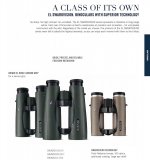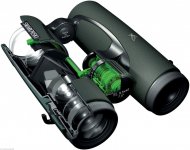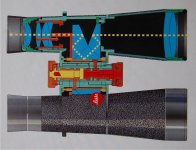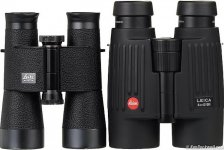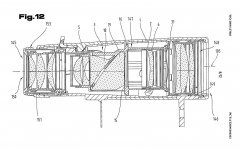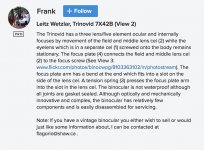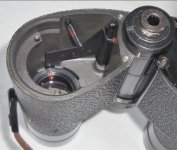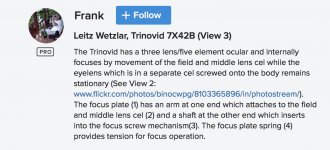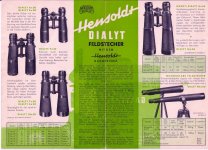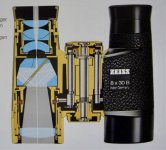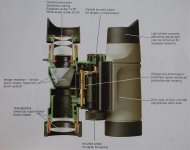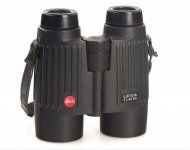John
I’m not surprised that you had a positive experience with the 8x40
Notwithstanding it had the common limitation of roof prisms of the era (a slight image softness, due to the lack of phase coating which was introduced first by Zeiss in 1989),
the design and handling qualities of the Leitz v2 Trinovids are still immediately obvious today and must have been a revelation when they were introduced in 1963
They had the expected Leitz quality in terms of materials, fit and finish
And they incorporated cutting edge technology and features in a package that was compact, ergonomic and elegant
In short, they embodied the great functional design in which Leitz (now Leica) frequently excels
They had most of the features that we today take for granted in binoculars - especially with the B eyepiece versions that commenced in 1965
And in relation to internal focus, while the Leitz wasn't air-tight and gas filled as we expect of modern binoculars,
the gasket sealed design was significantly more weather resistant than contemporary binoculars using external focusing mechanisms
During the 25 years of production, there was a variety of offerings:
6x24, 8x32, 10x40, 7x35 B, 7x42 B, 8x40 B, 8x32 B and 10x40 B (with rubber armoured versions introduced in 1979)
And as context helps provide understanding, a little history . . .
A) Prior to 1963
External focus/ air pump Porro prism designs dominated, with the main roof prism alternative being the Hensoldt (which dated back to 1905!)
Except for the use of Abbe-Koening prisms, the Hensoldt design was otherwise functionally identical to that of external focus Porros
All the models were very long (a combination of using a ‘relaxed’ optical formula employing long objective housings along with A-K prisms)
And they had a level of waterproofness similar to other external focus designs, and were dated in their styling
The post-WWII models included various magnifications from 6 to 16 power, combined with objectives from 30 to 56 mm
- see the image from a 1953 catalogue:
http://home.europa.com/~telscope/temp/
(and a 1956 catalogue can be found at the excellent resource Miniature Binoculars:
http://www.miniaturebinoculars.com/part2/Page13012.htm )
B) Other Roof Prism choices 1963 to 1988
None of the roof prism binoculars from the major brands equalled the Trinovid in the totality of it’s features
In 1964 Zeiss introduced the first version of its Dialyt 8x30 B, which was followed in 1968 by the 10x40 B
Both used Schmidt-Pechan prisms, were compact and had modern styling
However they were externally focused by moving the objective lens pairs within their open ended housings, and so they were not particularly weatherproof
- see the image from:
https://forum.astronomie.de/threads/fernglas-zeiss-8x30b-classic.149765/#post-851836
And there was only the two models
(In 1968 Zeiss introduced a slightly updated version of the Hensoldt design in 8x56 B, with the 7x42 B following in 1981, and later a rare 6x42 B individual focus version
However they had the same limitations as their ancestors)
It was not until 1985 that Swarovski introduced its first roof prism offering the SLC in 8x30, with the 7x30 following in 1986
Like Zeiss they also used Schmidt-Pechan prisms, were compact with modern styling, and were externally focused by moving the objective lens pairs in open ended housings
- see the image courtesy of Henry Link:
https://www.birdforum.net/showpost.php?p=2215925&postcount=237
(It was not until after the discontinuation of the Trinovid, that the air-tight x30 Mk II version was introduced in 1989, and the larger 42 mm objective models weren’t introduced until 1992)
C) And then in 1990
Leica again took the lead with the introduction of the Trinovid Ultra BA line . . .
(see the early Leica BA, per a 2017 listing at
http://www.leicashop.com/ )
John





